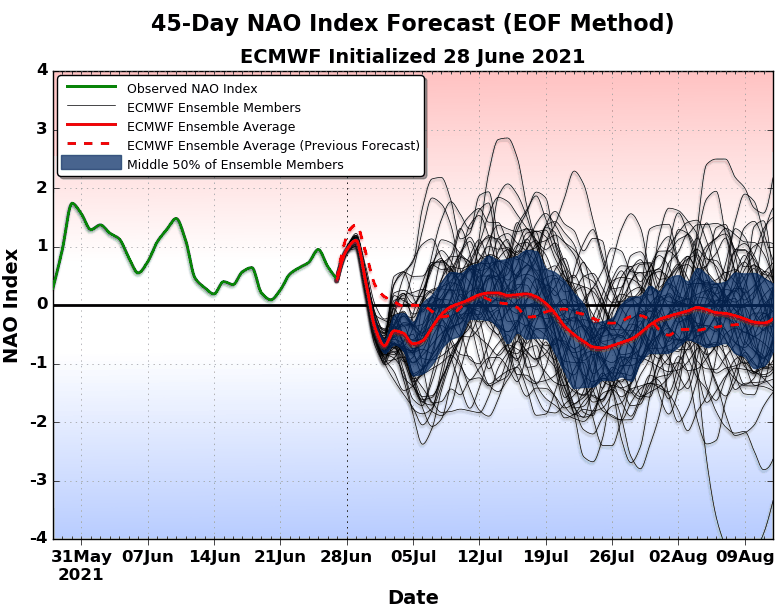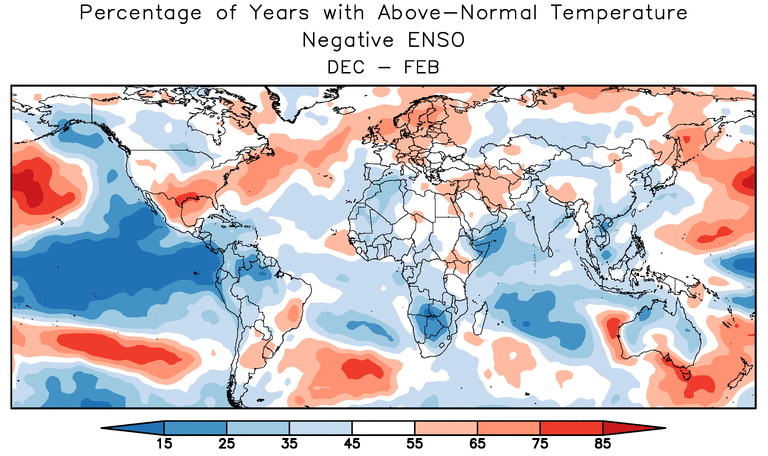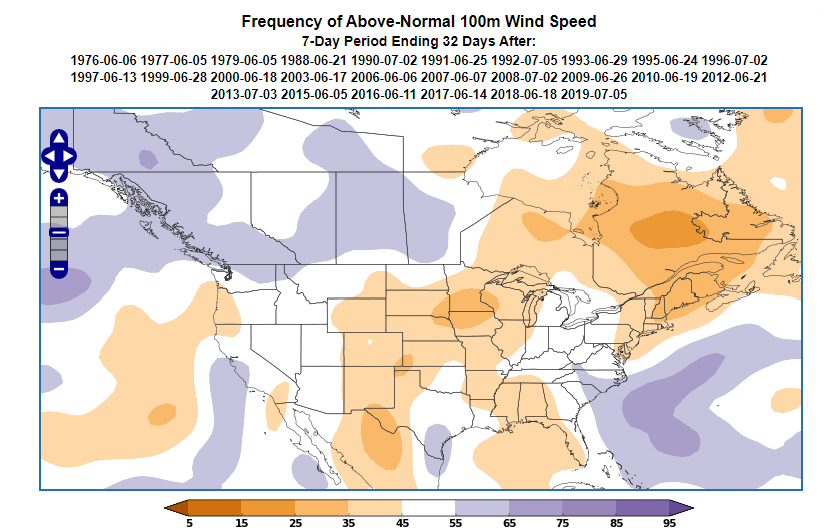As Mark Twain once postulated, “no occurrence is sole and solitary, but is merely a repetition of a thing which has happened before, and perhaps often.” That phrase describes analog forecasting in a nutshell. We can identify times in the past in which the weather pattern was similar to today’s pattern. There is a good chance current weather conditions will follow a similar, predictable evolution with that information. This phenomenon allows long-range forecasters to take advantage of prior weather and climate conditions to forecast the future.
Analog Forecasting: A Focus on Past Weather/Climate Conditions
Analog forecasting, which uses past weather and climate conditions to forecast the future, is only possible by having access to robust historical weather data records. Today high-quality weather records stretch back to 1950. Global forecasting centers such as NOAA and ECMWF maintain databases of historic weather known as reanalysis. The global reanalysis data are derived from:
- Surface weather observations from land-based weather stations and ships.
- Upper air observations from aircraft and balloons
- Satellite data since 1979
- Gridded data created by numerical weather prediction models
Historically, weather stations have been installed near where people live. Because of this, observational records are skewed towards inhabited parts of the world, meaning there are vast regions of the globe that have sparse, or even no, weather observations – this is particularly true over the oceans, deserts, and Arctic regions.
Weather data coverage improved dramatically with the introduction of satellite observation at the end of the 1970s. Satellites can routinely scan remote, uninhabited parts of the world, gathering valuable weather information.
Even with the addition of satellite data, the observational record can be patchy and intermittent. This problem is solved by feeding the historical observational data into the latest dynamical weather models, which can recreate past weather conditions. These dynamical models extrapolate the observational data to cover a grid across the entire globe. This process creates a smoothed historical data record covering every hour from 1950 until the present day.
Analog Forecasting: Climate Indices
The global climate system displays several large-scale cycles in various parts of the world, the El Niño/ Southern Oscillation being the most prominent. Anomalous weather in one location is often coincident with another type of weather (usually the opposite) in another location – this phenomenon is referred to as a teleconnection. Each climate cycle displays a degree of persistence and thus predictability. A climate Index describes the position of a given climate cycle within its cycle at a given moment in time.
By examining weather anomalies during the opposite phases of a particular climate index, we can very quickly see how conditions vary with that climate index around the world. Climate indices are a great place to start when looking for past events that may reoccur in the near future.


Analog Forecasting: The Basics
An introduction to analog forecasting often begins with the “big picture” climate indices such as ENSO, the North Atlantic Oscillation (NAO), the Pacific Decadal Oscillation (PDO), to name but a few. Some climate index values persist for many months or even years, while other cycles are brief but associated with very distinct and predictable weather and climate events. However, when conducting a temperature analog forecast, careful consideration of the climatology period must be considered.

Analog Forecasting – Method 1
A simple analog forecasting method is to match the recent or forecast 500 mb pattern over a broad area (such as a continent or even the whole hemisphere) to similar times in the past. The list of previous examples can then be combined and rolled forward in time to present a possible future evolution.
Analog Forecasting – Method 2
There are times when a subseasonal dynamical model will forecast a clear anomaly for a given climate index. It is known that dynamical models are not always internally consistent: i.e. they do not always correctly forecast an index’s impact on temperature, precipitation, and other variables consistent with typical weather observed during a particular climate index phase. In this case, knowing the typical weather response to the index allows a forecaster to reasonably expect that future forecasts will tend towards the longer-term, average response of the climate index.
Analog Forecasting: World Climate Service Analog Tools
The WCS provides subscribers with a powerful data mining system which allows users to instantly review the impacts of all of the significant climate indices at various times of the year, all over the world. With this system, users can quickly become experts in the typical weather associated with various climate indices.
In addition, the WCS has developed a unique subseasonal data mining system, which enables the construction of analog sets based on climate indices such as the Madden-Julian Oscillation (MJO), stratospheric polar vortex (SPV), Pacific North America (PNA) pattern, and more. The analyses are viewable in terms of anomaly or probability maps for precipitation, temperature, wind, solar and more.

Analog Forecasting in Long Range Forecasting
The analog forecasting methodology is an invaluable resource for long-range forecasters. Analog forecasting provides several advantages:
- skill is independent of dynamical modelling
- skill is comparable to that produced by dynamical modelling
- prediction is often simple and does not require huge computing resources
- signals are often valid for many weeks, and even months, into the future
Here is an example of analog forecasting in action from a previous World Climate Service seasonal forecast.

Analog Forecasting: Conclusion
Analog forecasting is a simple yet powerful method forming an essential part of modern long-range weather forecasting. The World Climate Service has developed a suite of versatile seasonal and subseasonal analog forecast systems that enable users to quickly and easily produce their own analog forecasts.
When the dynamical models disagree among themselves and with relevant analog forecasts, then the World Climate Service will often successfully rely on an analog to produce the monthly seasonal climate forecast. High-confidence forecasts become possible when the dynamical forecasts and appropriate analog forecasts agree and reinforce each other.